
De-tracking is when a track partially removes itself from the undercarriage during operations by disengaging from one of the components such as the sprocket, idler or rollers. This causes down-time and can lead to failure by fatal breakage.
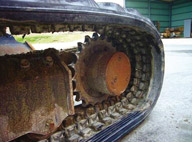
De-tracking at sprocket
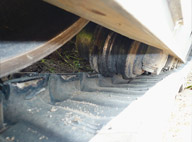
De-tracking at track roller
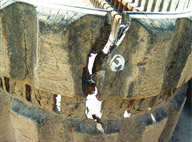
Steel cord breakage from de-tracking

Bridgestone uses an interlocking design to reduce de-tracking. By interlocking adjacent core metals the track benefits from more lateral stiffness. Both single and double interlocking systems are available.
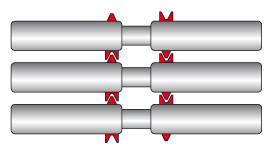
Double engaged interlocking
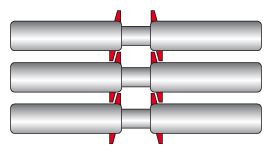
Single engaged interlocking
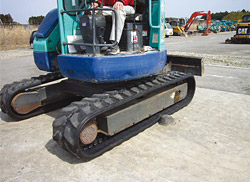 Interlocking technologies have become common features in Bridgestone short pitch tracks. Positive market feedback, successful supply history and Bridgestone's internal testing all confirm the benefits of interlocking technologies.
Interlocking technologies have become common features in Bridgestone short pitch tracks. Positive market feedback, successful supply history and Bridgestone's internal testing all confirm the benefits of interlocking technologies.
The following testing was carried out at Bridgestone's proving ground in Tochigi Japan. Even in loose tension conditions (sag=45mm) interlocking tracks did not de-track.
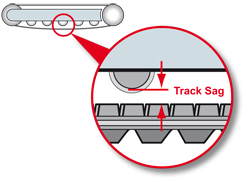
| Tension | Track sag | De-tracking occurrence | |
|---|---|---|---|
| Interlocking | Non-interlocking | ||
| Normal | 15mm | Zero | 6 |
| Loose | 30mm | Zero | 10 |
| Very Loose | 45mm | Zero | 10 |